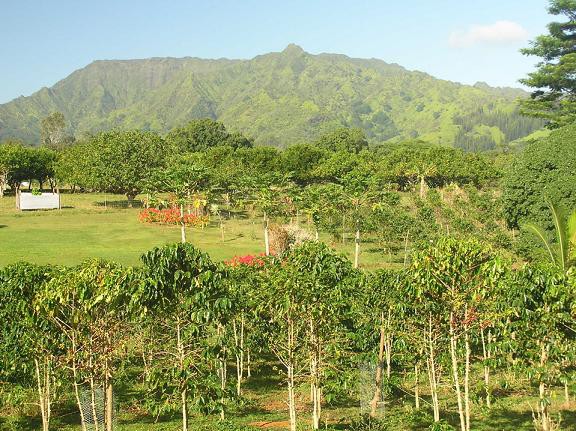Coffee has been cultivated for many hundreds of years. Over the centuries, ideal conditions have been developed for the coffee tree shrubs. As in the case of wine or high-quality tobacco varieties, what counts here is appropriate soil, relatively high temperature and adequate sunlight.

Coffee trees are about 2 meters high. However, it is the result of human work – in natural conditions they can reach up to 15 meters! They are regularly pruned for a rather prosaic reason: too high a height would make it much more difficult to harvest their fruit.
From the moment of planting a coffee tree, it takes about 5-7 years to first bloom and then bear fruit. It is not the fruits themselves that are what the whole world wants, but their … seeds. Coffee beans are the seeds of the coffee tree fruit, which slightly resemble cherries. These fruits are dark red in color, and their flesh is sweet and hides 2 coffee beans surrounded by a hard husk, the so-called parchment.
There are about 10 varieties of coffee in the world, but in fact only 2 are cultivated: Arabica and Robusta (they account for about 98% – 99% of world production). More information about them can be found in the “Species” section of our guide.
LOCATION
Originally wild coffee bushes grew over the Abyssinian Plateau (the area of today’s Ethiopia). According to legend, they were discovered in the 9th century by Kaldi – a goat shepherd, who noticed that his animals were extremely agitated after eating fruit from, as it turned out, coffee bushes.
In the twenty-first century, the total area of coffee cultivation is about 10 million hectares and covers the so-called The Coffee Belt, i.e. the area of Central and West-Central Africa, Central America and the northern part of South America as well as India, Indonesia and Vietnam. The coffee tree requires a subtropical climate, i.e. one with no clear division into seasons (summer or spring / summer). Thanks to this, coffee trees can bear fruit several times a year.
ALTITUDE
The coffee tree bushes, apart from the fact that they grow in appropriate climatic zones, must also be located at appropriate altitudes above sea level. In the case of Arabica, it is at least 900 meters. This is because it is only at this altitude that the Hemileia Vastatrix disease, which attacks this variety of coffee trees, is controllable, and also because the average temperatures at this altitude (and also higher) favor the cultivation of Arabica.
Robusta, which is more disease resistant and prefers warmer temperatures, is grown at lower elevations.
Coffee trees, like almost all plants, cannot tolerate two things: heat and frost. Therefore, temperatures in places where plantations are located usually do not exceed 30 degrees Celsius, but are also not lower than 15 degrees.
Arabica, which grows higher, prefer temperatures of 20-25 degrees, while Robusta, whose plantations are located at lower elevations, prefer slightly higher temperatures. Coffee trees do not like 100% sunlight, therefore palms or banana trees are usually planted near them.
